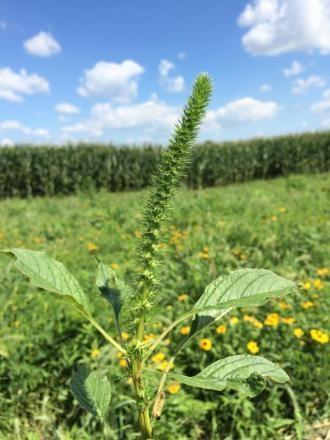|
Over the past year, Iowa State University Extension and Outreach specialists and agronomy faculty have been warning Iowans about Palmer amaranth. The pervasive species has been found in 50 of Iowa's 99 counties. At the same time last year, the weed had been identified in only nine counties.
During the last legislative session, Iowa lawmakers heard Iowa State's message and declared Palmer amaranth a noxious weed so eradication efforts could begin.
The message from Iowa State is simple -- while there are few large-scale infestations identified in Iowa currently, if not identified and eradicated before it becomes permanently established in the state, it will aggressively invade and crowd out corn, soybeans, and other cash crops.
 Identifying Palmer amaranth is critical now, as it continues to spread in Iowa. It looks very similar to waterhemp, so educators are concerned people will fail to identify Palmer amaranth and take necessary
steps to eradicate it.
Even when people get tired of hearing about Palmer Amaranth, Iowa State's vigilant weed scientists and field agronomists keep educating and encouraging action.
More and more Iowa landowners and farmers are taking the message seriously. They are able to identify the "super weed" and implement diversified weed management practices to minimize Palmer amaranth's harm and eradicate the noxious weed.
Did you know? Extension field agronomists host a series of meetings across Iowa every Januar
y t
hat bring researchers and their latest findings to discussions on local production concerns. The
Crop Advantage Series will be offered at 14 locations during January 2018.
|